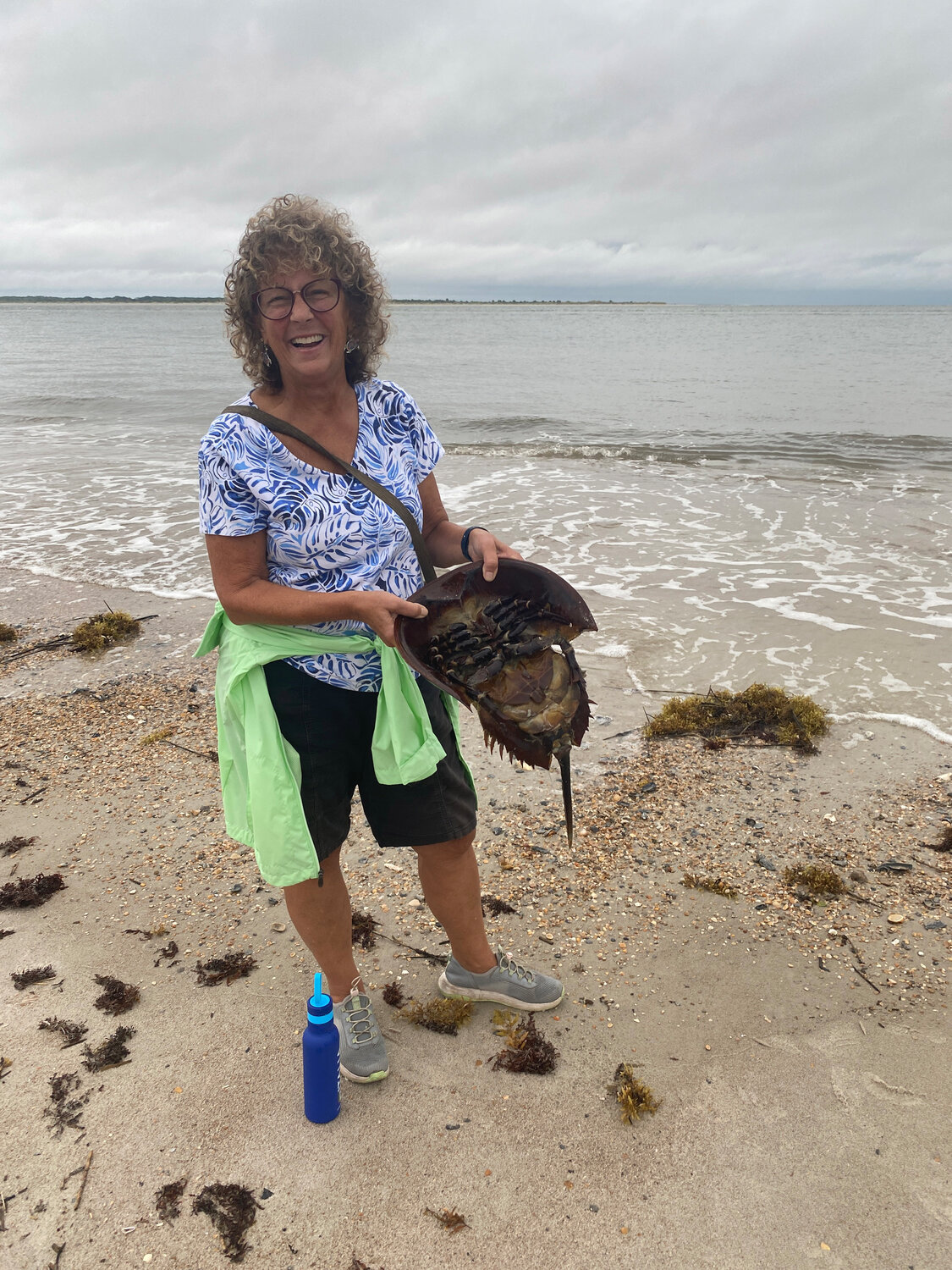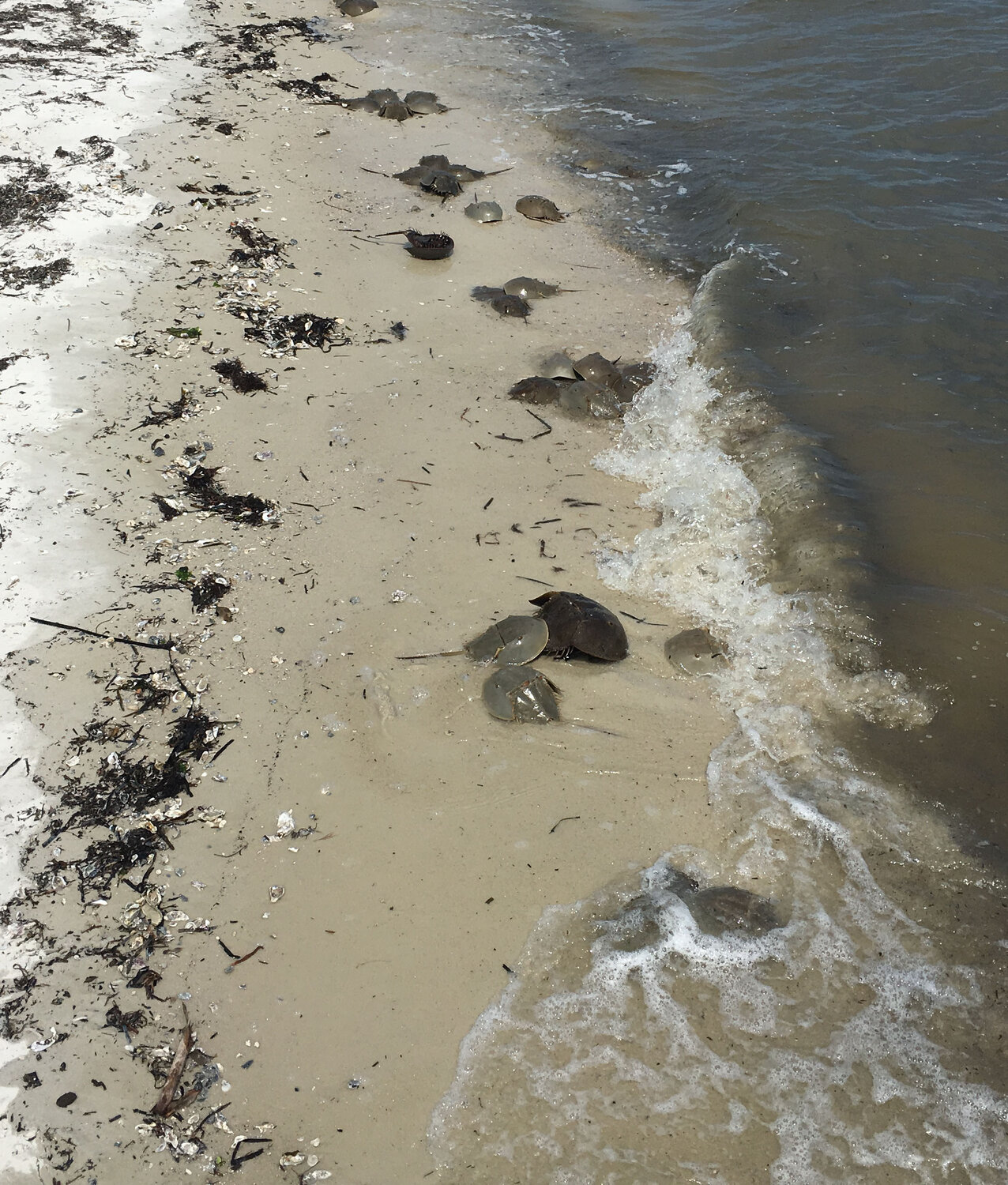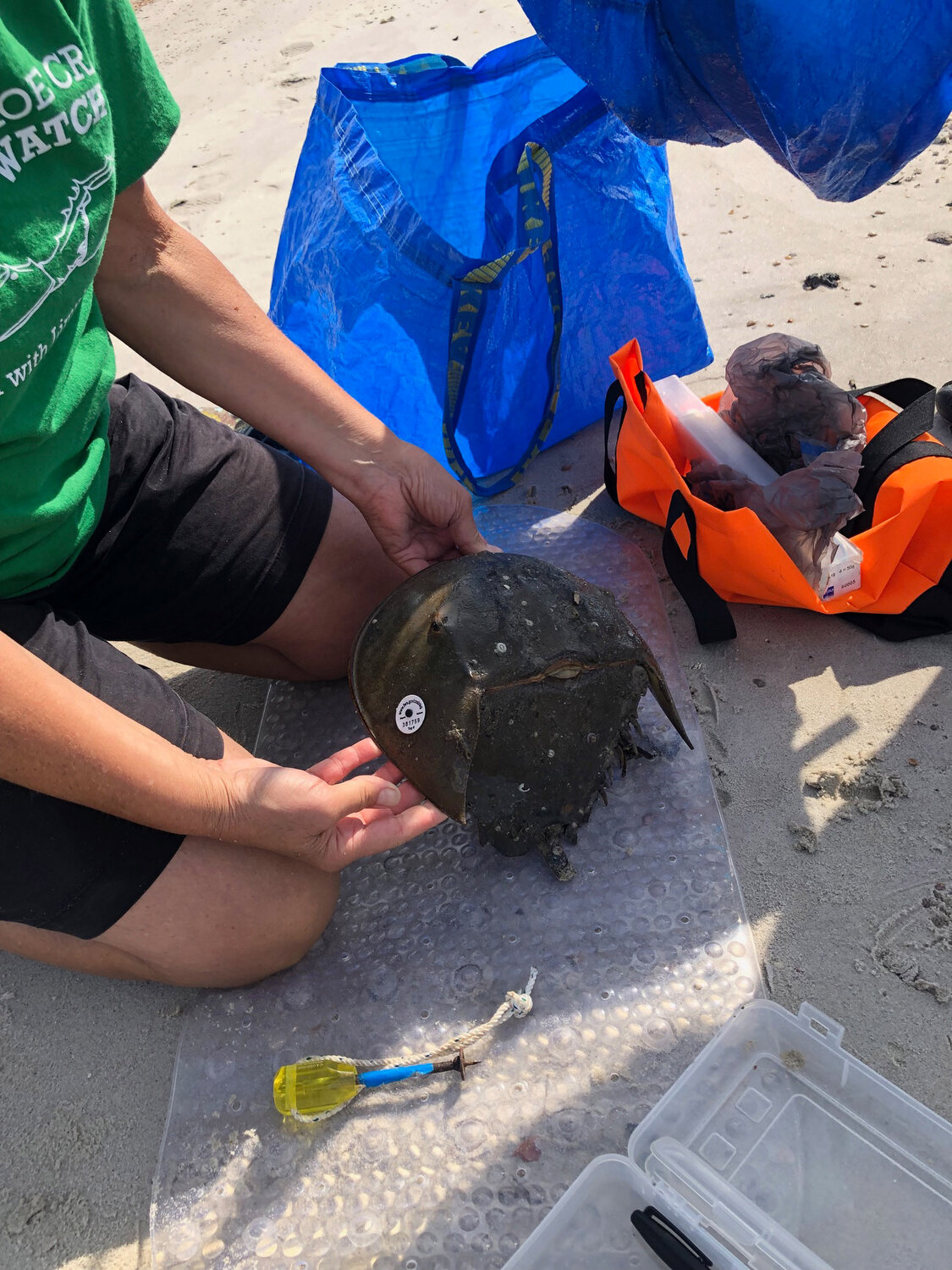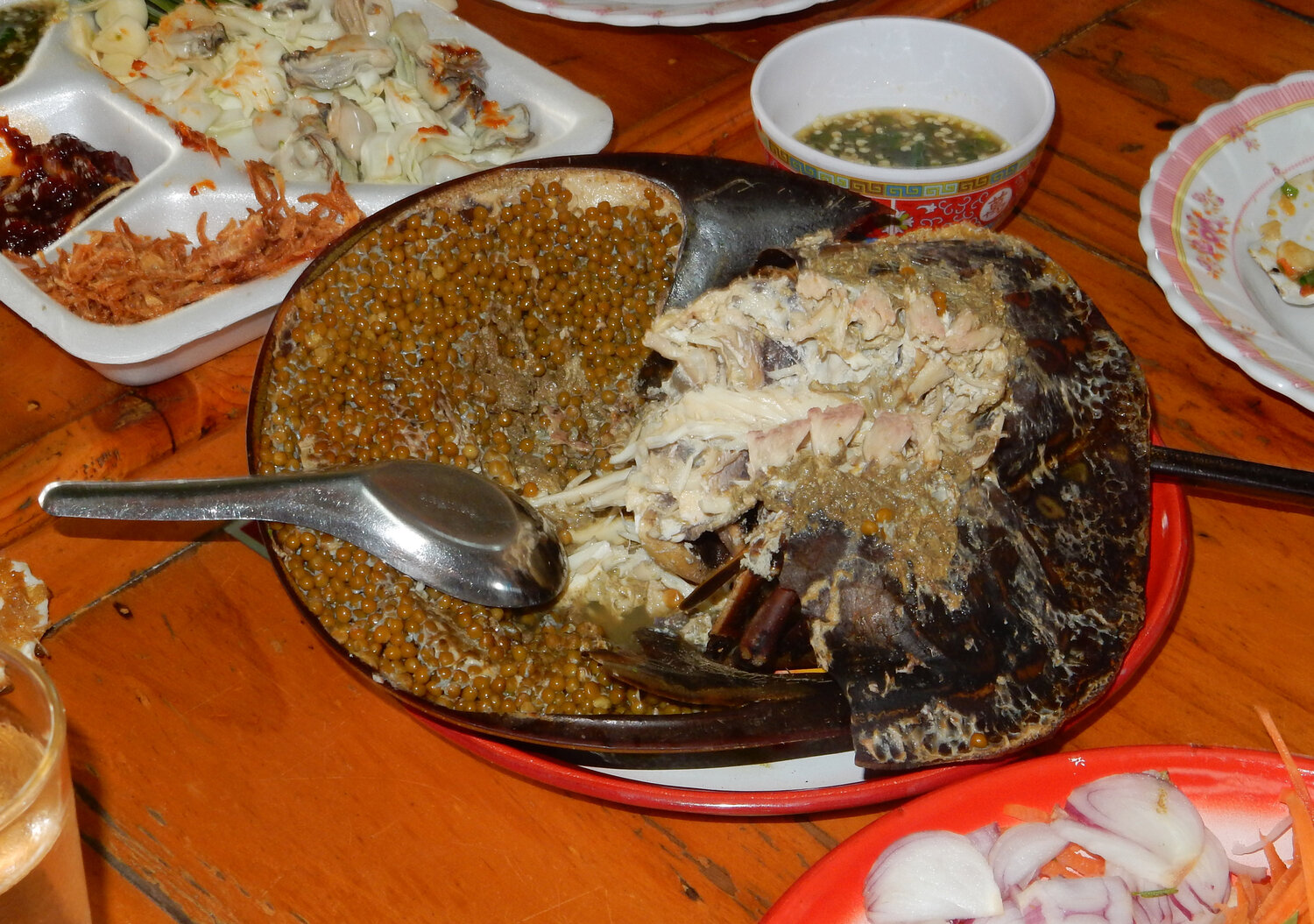Pat's Wildways: Horseshoe Crabs
I was almost too late to catch the horseshoe crab monitoring project on Amelia Island this spring but I managed to connect with local horseshoe crab survey team leader Kathy Mason right at the end when the tally had been made. This year, during the spring survey period on two sites in Fort Clinch State Park, 19 crabs were found, measured, and the largest ones affixed with tags. This was a wonderful increase since only two horseshoe crabs were discovered during the same period the year before. Although more were found in previous years, the numbers are nothing like fishermen and old-time beach walkers recall in years past. Horseshoe crabs, although not classified as endangered, are definitely in trouble.
Kathy has been trained as a citizen scientist in horseshoe crab survey and study techniques at the University of Florida’s Nature Coast Biological Station in Cedar Key and has been participating in these efforts for the eight years she has lived in Fernandina. Unlike many volunteers, Kathy has a master’s degree in marine biology, a great asset to this volunteer work. So, I was excited to walk the beach with her at one of the sites along the river east of the fort and to learn as much as I could.
Luckily, on our walk, there was one horseshoe crab there, albeit a dead one, and Kathy showed me that it was a female, with no large forward claws, and an old one at that with lots of mating scars on her back. Horseshoe crab males, which are smaller than females, link up on top of their mate, and often these two can be found together on the beach. Cedar Key is an epicenter for horseshoe crab mating, and sometimes mating groups can be found with masses of males looking to hook up with females.
And why are horseshoe crabs important to us, one might ask? These ancient creatures, more related to spiders than other crabs, have blue blood with special properties that are useful in vaccine development and drug testing. Although many of the horseshoe crabs harvested and drained of nearly half their blood by biomedical labs are returned to the sea, there is no accountability about how many of these survive. And, the many horseshoe crabs harvested for use as bait for shellfish traps have no chance for survival at all. In Long Island, not long ago, I interviewed fishermen who were setting their traps for whelks using cut up horseshoe crabs. My Long Island-raised husband remembers horseshoe crabs carpeting the muddy shores of the Great South Bay. These days are long gone, both for him and for the crabs.
Although people in the United States do not generally eat horseshoe crabs, I have found this delicacy served in Thailand, where the crabs are cooked and their eggs (roe) are consumed. Some say the eggs taste like plastic, and even I couldn’t bring myself to try them. Their eggs, however, are an important food source for seabirds, especially migratory ones like the threatened red knots that depend on these eggs in the Chesapeake Bay area to fuel their long migrations north and south. The marked decline in horseshoe crab populations, due in part to human harvests and most likely due to habitat changes, too, is also leading to a decline in other species that depend on them.
These days you can still sometimes find horseshoe crabs on our beaches, even outside of their breeding seasons of spring and fall. Often the crabs you find are only shells of themselves. To grow, these animals shed their shells, and their now-soft bodies soon form larger shells to replace them. When young these crabs grow rapidly, casting off their old shells a number of times a year. But when they reach their final size they retain this last shell for more than a year -- long enough for the tags that the researchers attach to their shells to remain in place for someone else to find and report their occurrence. The more information gathered in this way, the more we can learn about them in efforts to conserve and protect remaining populations. If you want to help this effort, report any tagged or mating horseshoe crabs to the FWC. And if you want to join the horseshoe crabs citizen scientist efforts in our area this upcoming fall, Kathy Mason says it is fine to email her at [email protected] for further information.
Thanks, Kathy and your team for your hard work helping us understand this valuable species in our midst. Citizen scientist efforts like these are providing valuable information on many species now. We all can help in these efforts.
Pat Foster-Turley, Ph.D., is a zoologist on Amelia Island. She welcomes your nature questions and observations. [email protected]














Comments
No comments on this item Please log in to comment by clicking here